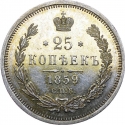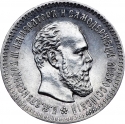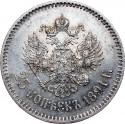You are about to finish your registration. Please check your mailbox (including spam folder). There should be a letter with a confirmation link. Check setting to make sure that your e-mail address is correct.
Send letter againDescription
Nicholas II (1868-1918) was the last Emperor of Russia, Grand Duke of Finland, and titular King of Poland. Nicholas II ruled from 1894 until his forced abdication in 1917. His reign saw Imperial Russia go from being one of the foremost great powers of the world to economic and military collapse. Under his rule, Russia was decisively defeated in the Russo-Japanese War. The Anglo-Russian Entente, designed to counter German attempts to gain influence in the Middle East, ended the Great Game between Russia and the United Kingdom. As head of state, Nicholas approved the Russian mobilization of August 1914, which marked the beginning of Russia's involvement in the First World War, a war in which 3.3 million Russians were killed. Nicholas II abdicated following the February Revolution of 1917 during which he and his family were imprisoned and executed in 1918.
Obverse

|
Portrait of Nicholas II. Along the rim the official short title: By the Grace of God Nicholas II Emperor and Autocrat of All Russia. Б.М. НИКОЛАЙ II ИМПЕРАТОРЪ И САМОДЕРЖЕЦЪ ВСЕРОСС. |
|---|---|
Reverse

|
Displays the Lesser Coat of Arms of the Russian Empire - a two-headed eagle crowned with two imperial crowns, over which the same third crown, enlarged, with two flying ends of the ribbon of the Order of Saint Andrew. The State Eagle held a scepter and globus cruciger. On the chest of the eagle there was an escutcheon with the arms of Moscow, depicting Saint George, mounted and defeating the dragon. The Lesser Coat of Arms depicts the imperial double-headed eagle with the addition of the collar of the Order of Saint Andrew around the escutcheon of St. George, and the Arms of Astrakhan, Siberia, Georgia, Finland, Kiev-Vladimir-Novgorod, Taurica, Poland and Kazan on the wings (seen clockwise). 25 КОПѢЕКЪ 1896 Г. |
| Edge |





